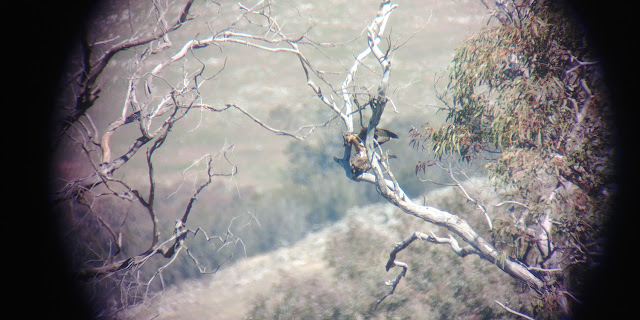Storm Damage
It is almost the end of the year and the young Little Eagles are fledging. The one above left her nest about two weeks ago, in early-mid December. She is a dark-phase bird and this shows up two flecks of her chick down on her dark breast. Otherwise she looks like a full-size Little Eagle. The red feathers on her nape are the most readily seen indicator that she is a young bird of the year. And note the large bulge in her throat, that is her crop, which is full. So her parents have been able to find ample food for her.
Not all the chicks in the Canberra study area have or will fledge this year though. These quills were found below one nest, where a chick had fallen and its body scavenged, perhaps by a fox.
The tips of the opening feathers indicate that the chick had been about four weeks age when it fell from the nest. That is a particularly vulnerable age for these chicks as they are large but still very downy. Down is easily soaked by persistent rain like the many heavy and prolonged downpours that fell during the eagles' nesting period this year. The adult eagles possibly also struggle to completely cover large chicks from rain. And they do need to go and hunt for themselves and their chicks, which exposes the chicks to rain and chilling. Or the adults might be all right to fast during the rain, but the chicks are less resilient and might die of hunger.
At least two chicks from separate nests have died during such storms this year. The chick in the above photograph however, has a well-sheltered nest, and it is almost ready to fledge. It is also very difficult to see. The bird in standing quietly on the edge of the nest, in the shade. Those same shady branches would have sheltered the chick from heavy rain. The two nests where chicks are known to have died were set high in the topmost branches of trees with little cover above them.
The exact nest site selected by adult birds can be critical to their breeding success.















































